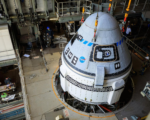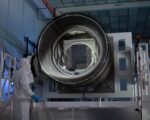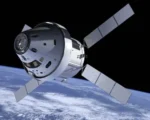NASA’s Parker Solar Probe is embarking on a historic mission, attempting the closest-ever approach to the Sun. The spacecraft is plunging into the Sun’s outer atmosphere, known as the corona, enduring extreme temperatures and radiation in a bid to unlock the mysteries of our star.
This daring fly-by will leave the probe out of communication for several days. Scientists will anxiously await a signal, expected at 05:00 GMT on 28 December, to confirm whether the probe has survived the intense conditions. The goal is to deepen our understanding of the Sun’s behavior and how it affects the solar system.
Dr. Nicola Fox, NASA’s head of science, emphasized the importance of firsthand exploration: “For centuries, people have studied the Sun, but you don’t experience the atmosphere of a place until you actually go visit it. And so we can’t really experience the atmosphere of our star unless we fly through it.”
Launched in 2018, the Parker Solar Probe has already completed 21 orbits around the Sun, gradually getting closer with each pass. The Christmas Eve mission is a groundbreaking moment, bringing the probe within 3.8 million miles (6.2 million km) of the Sun’s surface. Though this distance may seem vast, Fox puts it into perspective: “We are 93 million miles away from the Sun, so if I put the Sun and the Earth one metre apart, Parker Solar Probe is just four centimetres from the Sun.”
During its approach, the spacecraft will endure temperatures of 1,400°C (2,552°F) and radiation strong enough to damage its electronics. To protect it, the probe is shielded by a 11.5cm-thick (4.5 inches) carbon-composite heat shield. The spacecraft’s strategy is to fly in and out quickly, racing at an astonishing speed of 430,000 mph (700,000 km/h) — faster than any man-made object in history.
The Parker Solar Probe’s primary mission is to investigate the Sun’s corona, which remains an enigma for scientists. Dr. Jenifer Millard, an astronomer, explains, “The surface of the Sun is about 6,000°C, but the corona reaches millions of degrees — and it’s farther from the Sun. How is the outer atmosphere getting hotter?”
The probe’s journey will also help scientists study solar wind, the constant flow of charged particles from the corona. This space weather can lead to phenomena like auroras, but it can also disrupt power grids, communication systems, and electronics on Earth. “Understanding the Sun and its activity is so important to our everyday lives on Earth,” says Dr. Millard.
As the spacecraft is out of contact with Earth, NASA scientists are anxiously awaiting the return of a signal. Fox admitted to feeling nervous about the probe’s audacious attempt but remains confident in its design. “We really have designed it to withstand all of these brutal conditions. It’s a tough, tough little spacecraft,” she says.
If successful, the Parker Solar Probe will continue its groundbreaking mission, providing valuable insights into the Sun’s behavior and its impact on space weather for years to come.


















